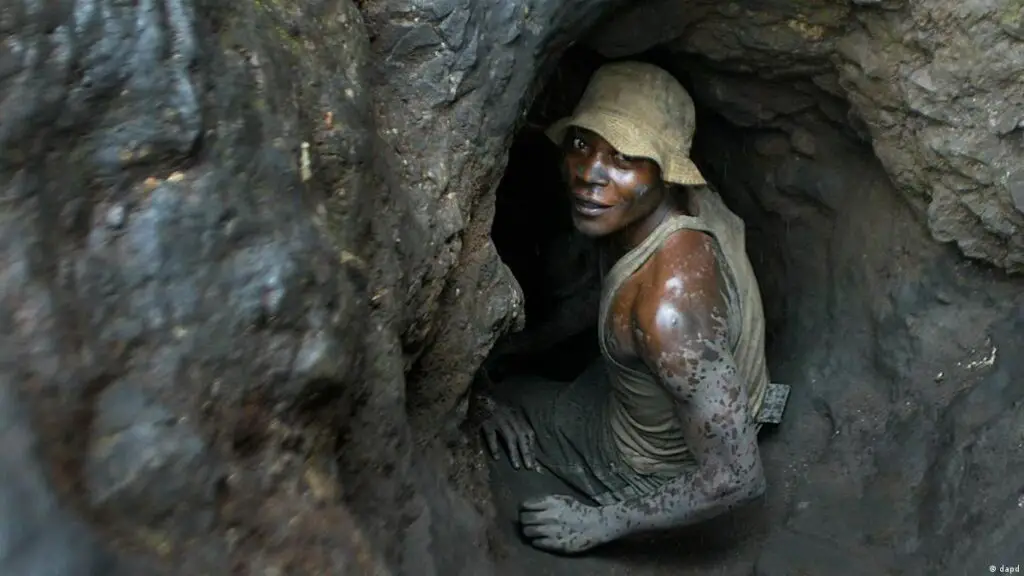- Companies that purchase cobalt are said to engage in a “futile” exercise when they attempt to differentiate flows from industrial mines and the significant production from small-scale artisanal mining
- Buyers will only be able to fulfil an anticipated four-fold growth in global demand for cobalt by 2030 with ASM
- The DRC Congo was the world’s greatest producer of cobalt in 2022, producing 130,000 tonnes of the metal, roughly 68% of all cobalt mined worldwide
To meet the growing demand for the mineral used in batteries that power electric vehicles and consumer gadgets, changes are needed to legitimize the activities of unregulated artisanal mining in the Democratic Republic of the Congo.
Companies that purchase cobalt are said to engage in a “futile” exercise when they attempt to differentiate flows from industrial mines and the significant production from small-scale artisanal mining, or ASM, according to a paper released on Wednesday 8th Feb by the NYU Stern Center for Business and Human Rights and the Geneva Center for Business and Human Rights.
Buyers will only bridge the gap of an anticipated four-fold growth in global demand for cobalt by 2030 with ASM, according to Dorothee Baumann-Pauly, head of the Geneva Center and author of the report.
Nearly 70% of the world’s cobalt supply comes from the Congo, primarily produced in industrial facilities under the management of large multinational corporations like Glencore Plc and CMOC Group Ltd. However, Darton Commodities claims that ASM material can account for almost 20% of Congo’s production when prices are high. According to the report, formalizing ASM procedures will assist in addressing the core causes of human rights violations, lessen extreme poverty in employees’ communities, and raise site safety standards.
The paper examines the outcomes of a pilot project from 2018 to 2020 that involved artisanal miners at the Mutoshi Mine in southeast Congo. Trafigura Group, Congolese miner Chemaf Sarl, the NGO Pact, and a nearby mining cooperative spearheaded the research.
Mutoshi showed how formalization might enhance miner safety, promote female participation, and reduce child labour. The report also notes that many implemented procedures are no longer followed, and conditions have worsened.
Trafigura and Chemaf abandoned the Mutoshi project due to Covid-19’s pandemic and the Congo’s intention to establish a monopoly on artisanal cobalt production.
The two companies did not immediately answer requests for comments outside regular business hours. They are still collaborating through Chemaf’s industrial mining operations in the Congo.
Also supported by Trafigura is Entreprise Generale du Cobalt, a projected artisanal cobalt monopoly in the Democratic Republic of the Congo. The project is now on hold while the government determines the company’s organizational structure.
Companies must seize this chance to promote formalization and ethical cobalt extraction to support a just and environmentally friendly global energy transition, according to Baumann-Pauly.
Record production of cobalt
In 2022, the world’s cobalt mining production climbed by 15% yearly to 190,000 tonnes according to the U.S. Geological Survey (USGS) compared to the 165,000 tonnes produced in 2021.
DRC had the highest cobalt production in 2022., accounting for about 68% of the world’s mined cobalt supplies.
DRC was the world’s greatest producer of cobalt in 2022, producing 130,000 tonnes of the metal of all cobalt mined worldwide. Indonesia (10,000 tonnes) and Russia were next.
According to USGS, most cobalt is mined as a byproduct of copper or nickel, except for limited production in the United States, production in Morocco, and artisanal cobalt mining in the Democratic Republic of the Congo.
The majority of China’s production of refined cobalt in 2022, according to the research, came from partly processed cobalt imported from the DRC.
With the rechargeable battery sector accounting for nearly 80% of total use, China is also the world’s largest cobalt consumer.
